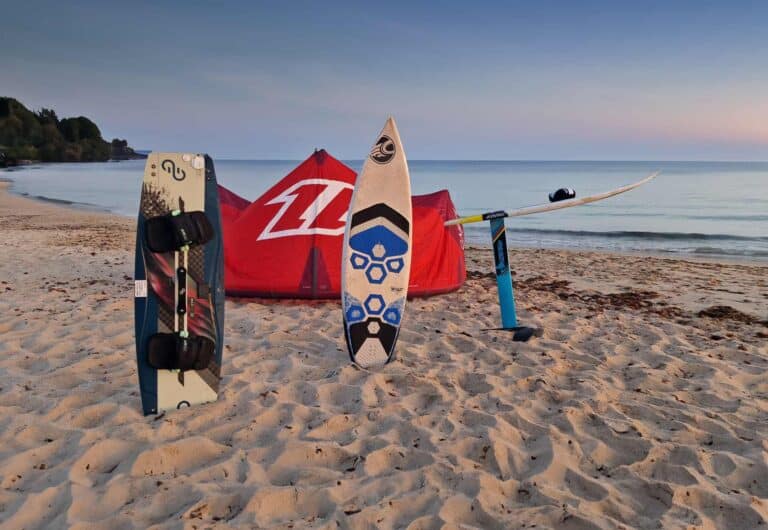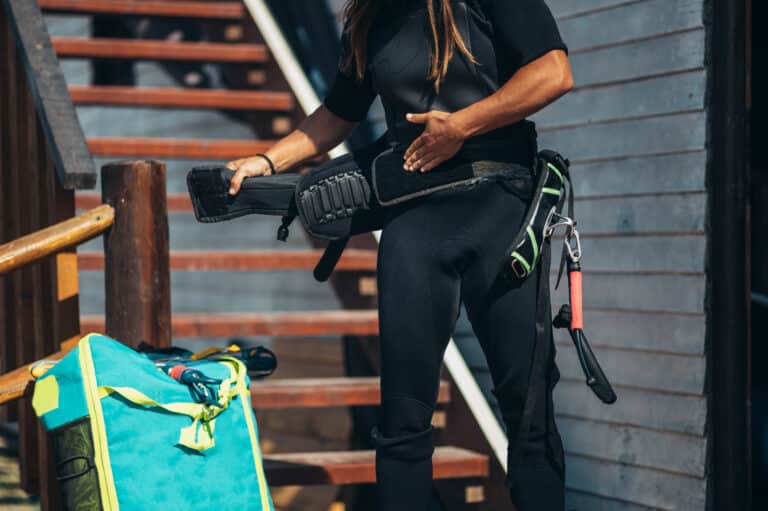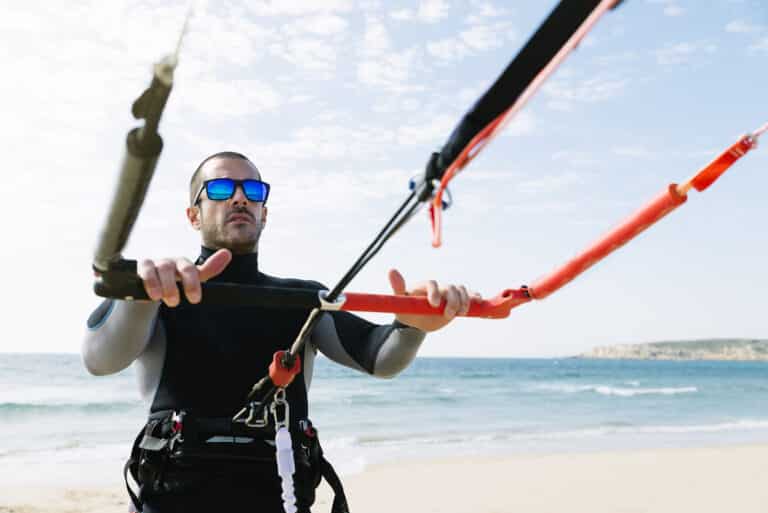Basic Function of Kiteboarding Equipment
The kiteboard is the central element of your kitesurfing equipment. It’s what allows you to glide over the water and serves as the foundation for all your movements and maneuvers. A kiteboard acts as the platform you stand on while being pulled by the kite through the wind. It enables you to build speed, ride waves, and perform spectacular jumps. Choosing the right kiteboard is crucial and depends on various factors, including your experience level, preferred riding style, and the specific water conditions where you’ll be kitesurfing.
The 3 Types of Kiteboards and Their Characteristics
Twin Tip Boards
There are three main types of kiteboards that differ in their features and areas of use: Twin Tip Boards, Directional Boards, and Foil Boards. Each of these boards offers unique advantages and is better suited for specific riding styles and conditions.
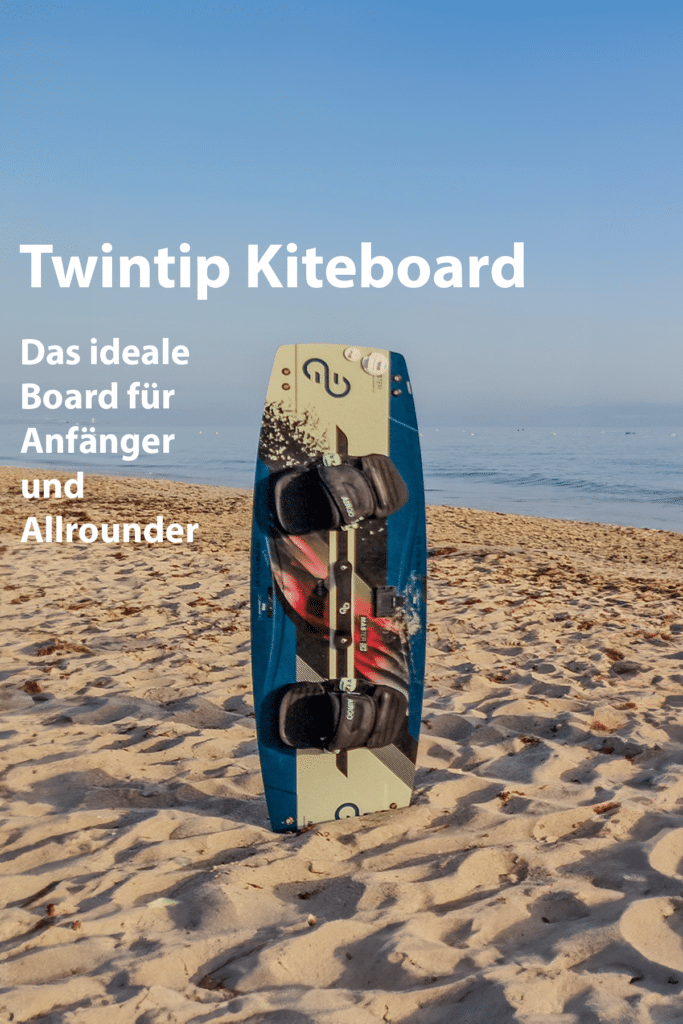
Properties:
Twin Tip Boards are the most common and versatile kiteboards. They are built symmetrically, meaning they can be ridden equally well in both directions. This symmetry makes it easier to learn to ride and offers flexibility, as you don’t have to worry about turning the board when changing direction.
Advantages
- Easy to Learn: The symmetry of Twin Tip Boards makes riding in both directions simple and intuitive, which is especially beneficial for beginners.
- Versatile: These boards are suitable for various riding styles and conditions, from flat water to small waves.
- Stability: Twin Tip Boards provide a stable platform, making it easier for beginners to develop their skills and gain confidence.
- Expert Advice: “Twin Tip Boards are best suited for beginners because they can be ridden in both directions.” – VDWS (Association of German Watersport Schools).
Advanced Tips: For advanced kitesurfers focusing on freestyle or big air, Twin Tip Boards offer the necessary flexibility and performance. They’re ideal for jumps, tricks, and high speeds. Look for stiffer boards for added pop and a more aggressive riding style, allowing you to achieve the highest jumps and most impressive tricks.
Directional Boards
Features: Directional Boards are designed to be ridden in one direction and resemble a surfboard in shape. These boards are specifically made for wave riding and deliver outstanding performance in choppy conditions and large waves. They are ideal for kitesurfers who enjoy wave riding and seek the challenge of navigating through rough waters.
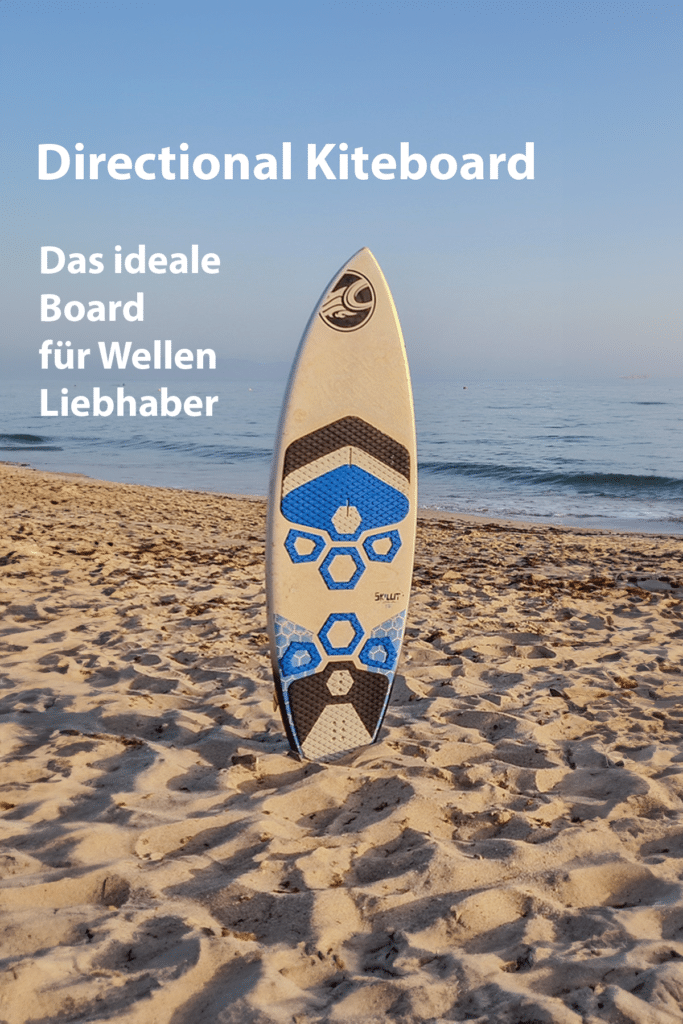
Advantages
- Wave Riding: Directional Boards are ideal for kitesurfers focused on wave surfing. They provide the buoyancy and stability needed to slice through waves and enjoy long rides.
- Efficiency: These boards offer better speed and control in a single direction, making them perfect for advanced kitesurfers who want to perform precise and powerful maneuvers.
- Maneuverability: Directional Boards allow for precise maneuvers and sharp turns, which are especially important in the waves.
Advanced Tips: Experienced kitesurfers use Directional Boards for strapless freestyle and wave riding. The ability to move without foot straps provides more freedom and control in the waves. However, this requires a higher level of skill and balance, as each maneuver relies on your ability to keep the board under control.
Foil Boards

Features: Foil Boards are equipped with a hydrofoil—a wing under the board that allows it to hover above the water. These boards are especially efficient in light winds and provide a unique riding experience, making you feel as though you’re flying over the water. They are ideal for advanced kitesurfers who want to continue enjoying their sport even in weak wind conditions.
Advantages
- Low Resistance: Foil Boards enable riding in very low wind, making them an excellent choice for light-wind days.
- Speed: With reduced water resistance, Foil Boards offer high speeds and quick gliding over the water.
- Smooth Glide: The sensation of almost weightlessly hovering over the water is unique and often described by kitesurfers as particularly enjoyable.
Advanced Tips: Foil Boards are ideal for advanced kitesurfers who want to hit the water in light-wind conditions. Riding a hydrofoil requires good balance and precise control. Experiment with different foil sizes and shapes to find your ideal combination and get the most out of your kiteboarding experience.
Technical Details and Characteristics of Kiteboards
A kiteboard’s performance is heavily influenced by its technical specifications, including board shape, size, and materials used. These factors affect how the board behaves on the water, how it responds to wind and wave conditions, and its durability.
The shape of a kiteboard, also known as the “shape,” is crucial for its handling and performance. Here are some common shapes:
Twin Tip Shapes:
Freeride: These boards often have a slightly rounded shape, providing stability and comfort, ideal for beginners and all-round riders.
Freestyle: Slightly stiffer and narrower boards with sharp edges offer better pop and control for tricks.
Big Air: Specially designed boards for high jumps, often stiffer with less flexibility to achieve maximum jump height.
Directional Shapes:
Wave Boards: These boards have a curved nose and narrower tail, allowing for better carving and cutting into waves.
Race Boards: Flatter, longer boards optimized for high speeds and efficient upwind travel.
Foil Shapes:
Freeride Foils: Slightly wider boards with more volume provide stability at low speeds and make learning to foil easier.
Race Foils: Narrower and longer boards designed for maximum speed and performance.
Materials and Construction
The materials and construction of a kiteboard significantly impact its performance and durability:
- Wood Core: Most kiteboards have a core made of wood (typically Paulownia or poplar), valued for its flexibility and durability. Wood cores offer natural shock absorption and a balanced combination of flex and stiffness.
- Carbon: Some high-end boards use carbon fibers to reduce weight and increase stiffness. This enhances pop and provides quicker response, especially important for freestyle and big air.
- Fiberglass: Often used in combination with wood, fiberglass offers a good balance between flexibility and stiffness. It ensures a smooth ride and increases the board’s durability.
- ABS Edges: These edge materials enhance durability and resistance to damage, which is especially important in demanding conditions.
Tips for Buying a Kiteboard

Buying a kiteboard can be challenging, especially if you’re new to the sport. Here are some tips to help you make the right choice:
- Experience Level: Beginners should choose a larger, softer board that forgives mistakes and is easier to control. Advanced kitesurfers can switch to smaller, stiffer boards that offer more performance and precision.
- Weight: Your body weight plays an important role in choosing the right board size. Lighter riders need smaller boards, while heavier riders should opt for larger boards to provide enough buoyancy.
- Riding Style: Choose a board that matches your preferred riding style, whether it’s freeride, freestyle, wave riding, or hydrofoiling. Each board is optimized for a specific purpose, and the right choice can make the difference between a good day and a great day on the water.
- Quality: Look for high-quality materials and good construction to ensure the board’s longevity. A well-made board can bring you joy for many years and pays off in the long run.
Expert Tips for Beginners and Advanced Riders
Beginner Tips: For those new to kitesurfing, choosing a board that helps you progress quickly while keeping it fun is essential. According to VDWS, Twin Tip Boards are the best choice for beginners. Their symmetrical shape and ability to ride in both directions make them extremely user-friendly and ideal for learning.
- Board Size: A larger board provides more stability and is easier to control, making it ideal for beginners.
- Flexibility: Choose a board with good flexibility, as it forgives mistakes and makes landings softer.
- Good Bindings: Look for comfortable and secure bindings to keep your feet firmly on the board, especially important when learning.
Advanced Tips: For advanced kitesurfers looking to further develop their skills, there are specialized boards tailored to different disciplines.
- Freestyle and Big Air: Stiffer Twin Tip Boards offer more pop and control for tricks and jumps, making them ideal for experienced kitesurfers.
- Wave Riding: Directional Boards without foot straps provide greater freedom of movement and control in the waves, making them the top choice for advanced wave riders.
- Light Wind and Racing: Foil Boards are perfect for getting on the water even in light winds and reaching high speeds, opening up new possibilities for advanced kitesurfers.
If you’d like to learn more about kiteboard shapes and their impact on your kitesurfing adventures, check out Kite-Buddy’s YouTube video.
